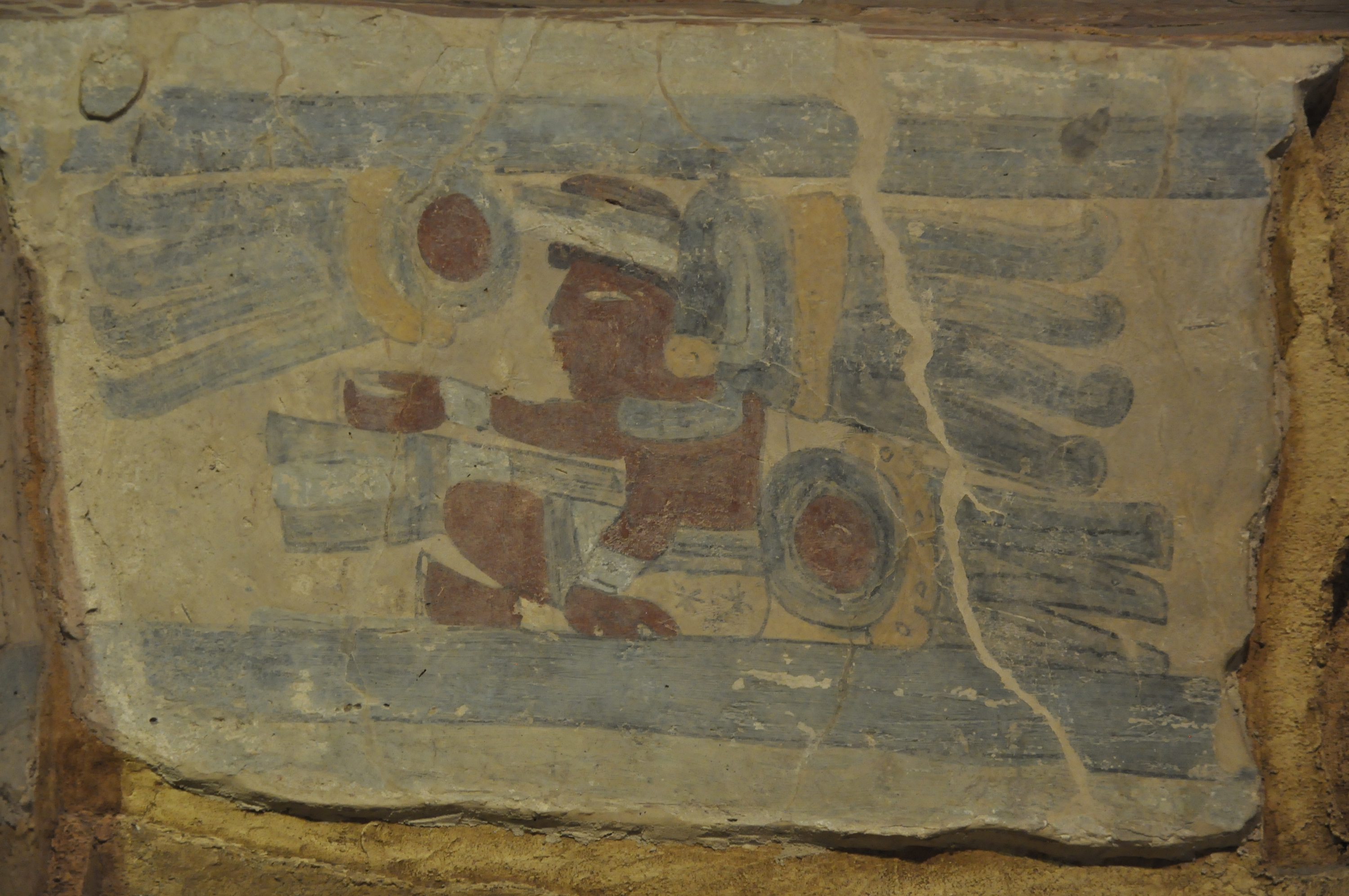In the area known as Mesoamerica, a concept coined by Paul Kirchhoff in 1943, there is a wide geography along the Gulf Coast of México, where Olmec art had its splendor, like Totonac and Huastec culture.
This fragment with Tezcacuitlapilli comes from Las Higueras, archeological site of the Mesoamerican Epiclassic period. It was found attached to Building 1 and only excavated in 1968 by Ramon Arellanos Melgarejo, pioneer of Veracruz archeology and researcher of Anthropology at the Institute at Universidad Veracruzana.
In this fragment of mural painting, it is possible to see a seated person with red body paint, with blue feathers, accessories and jewels in blue tones resembling turquoise, and with typical clothing of priests and warriors associated with Quetzalcoatl, the main god of Mesoamerica.
During the archaeological excavations in Las Higueras in the 1970s, around 200 fragments of pre-Hispanic mural painting were detached, similar to the 18th to the 19th century conservation and restoration actions of Pompeian frescoes.
Since 2001, we can walk around an archaeological and museographic reconstruction carried out by the archaeologist and museographer Rubén Morante López and a wide team of diverse specialists, which you can see in the Anthropology Museum of Xalapa, Veracruz, Mexico.
-Anael Joanna González Álvarez


 Unknown Artist
Unknown Artist